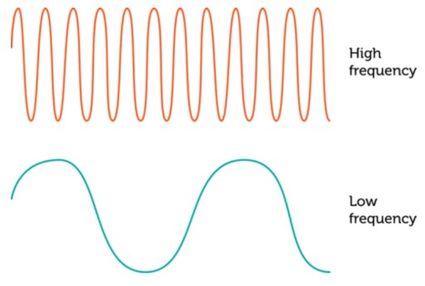Note Frequency Calculator
This note frequency calculator is a convenient tool to determine the frequency of musical notes tuned in the twelve-tone equal temperament. In the text, you'll find the note frequency chart and a guide on how to use the note frequency converter.
We'll also cover the basics of the physics of sound — if you want to learn more about it, check out our relevant calculators:
The frequency of musical notes
Sound is a wave which travels through a medium, such as air or water. All sounds consist of sine waves with different frequencies and amplitudes. Amplitude determines volume, and frequency determines pitch.
Technically, frequency is the number of completed wave cycles per second, and is expressed in Hertz. For example the frequency of the musical note C4 is approximately 262 Hz. This means the sound wave has 262 cycles per second.

Musical notes have determined frequencies. For example, in the twelve-tone equal temperament (the most common tuning system since the 18th century), note A4 has a frequency of 440 Hz.
If one note is double the frequency of another, they sound similar, so we designate them with the same letter. We then add a number to represent the octave - that is to say whether we mean a higher or lower D.
This way of representing musical notes if called the scientific pitch notation.
If you'd like to know how to go from a musical note in hertz to semitones, you can use the semitone calculator. And if you want to learn the basics of harmony, head to our harmonic series calculator!
How to use the note frequency calculator
-
Choose the name of the note. Note pairs like F♯ and G♭, or C♯ and D♭, are enharmonic equivalents, which means they denote the same sound.
-
Choose an octave.
-
By default, the calculator rounds the frequency of the musical note to two decimal places, but you can increase the precision.
The note frequency chart
Below you can see a table with the rounded frequencies of musical notes in Hertz:
Octave / Note | 0 | 1 | 2 | 3 | 4 | 5 | 6 | 7 | 8 |
|---|---|---|---|---|---|---|---|---|---|
C | 16 | 33 | 65 | 131 | 262 | 523 | 1047 | 2093 | 4186 |
C♯ | 17 | 35 | 69 | 139 | 277 | 554 | 1109 | 2217 | 4435 |
D | 18 | 37 | 73 | 147 | 294 | 587 | 1175 | 2349 | 4699 |
D♯ | 19 | 39 | 78 | 156 | 311 | 622 | 1245 | 2489 | 4978 |
E | 21 | 41 | 82 | 165 | 330 | 659 | 1319 | 2637 | 5274 |
F | 22 | 44 | 87 | 175 | 349 | 698 | 1397 | 2794 | 5588 |
F♯ | 23 | 46 | 93 | 185 | 370 | 740 | 1480 | 2960 | 5920 |
G | 25 | 49 | 98 | 196 | 392 | 784 | 1568 | 3136 | 6272 |
G♯ | 26 | 52 | 104 | 208 | 415 | 831 | 1661 | 3322 | 6645 |
A | 28 | 55 | 110 | 220 | 440 | 880 | 1760 | 3520 | 7040 |
A♯ | 29 | 58 | 117 | 233 | 466 | 932 | 1865 | 3729 | 7459 |
B | 31 | 62 | 123 | 247 | 494 | 988 | 1976 | 3951 | 7902 |